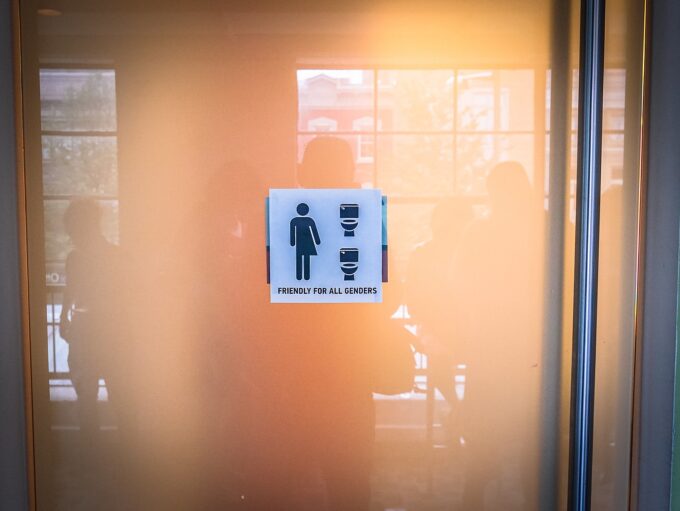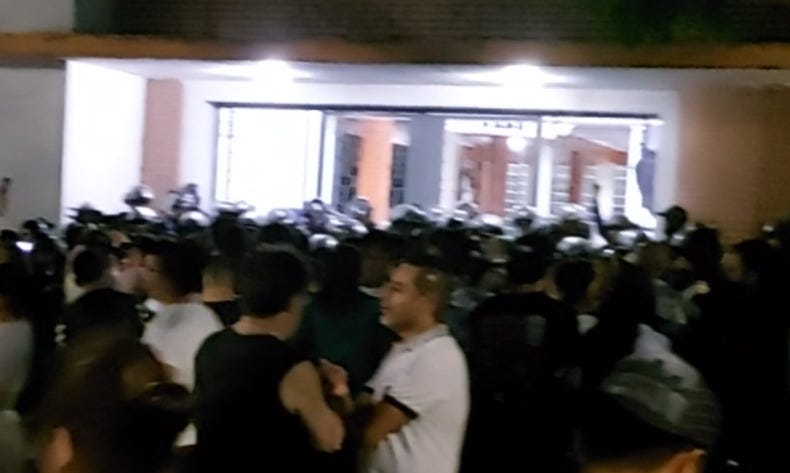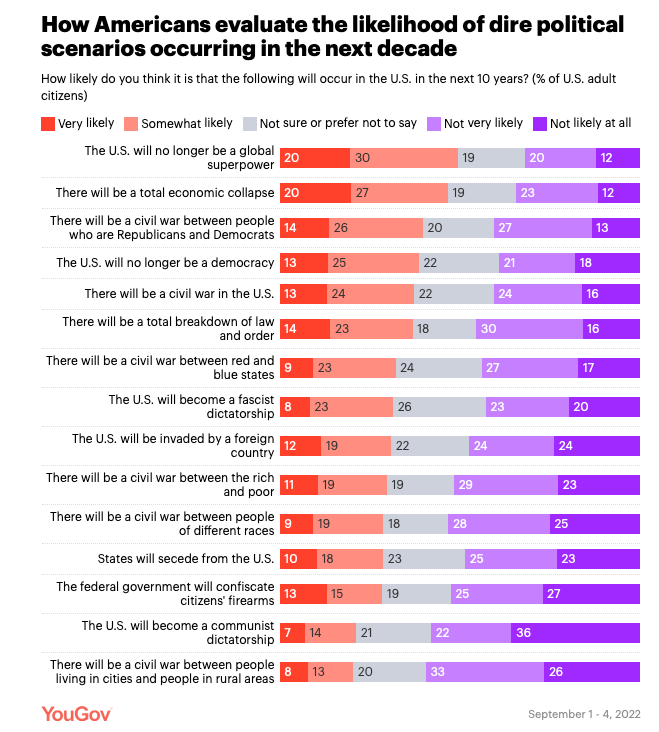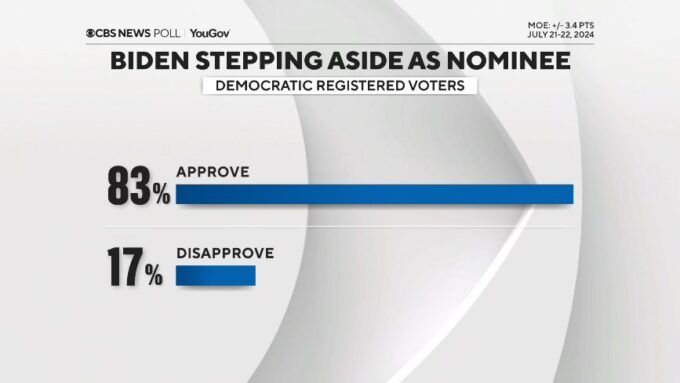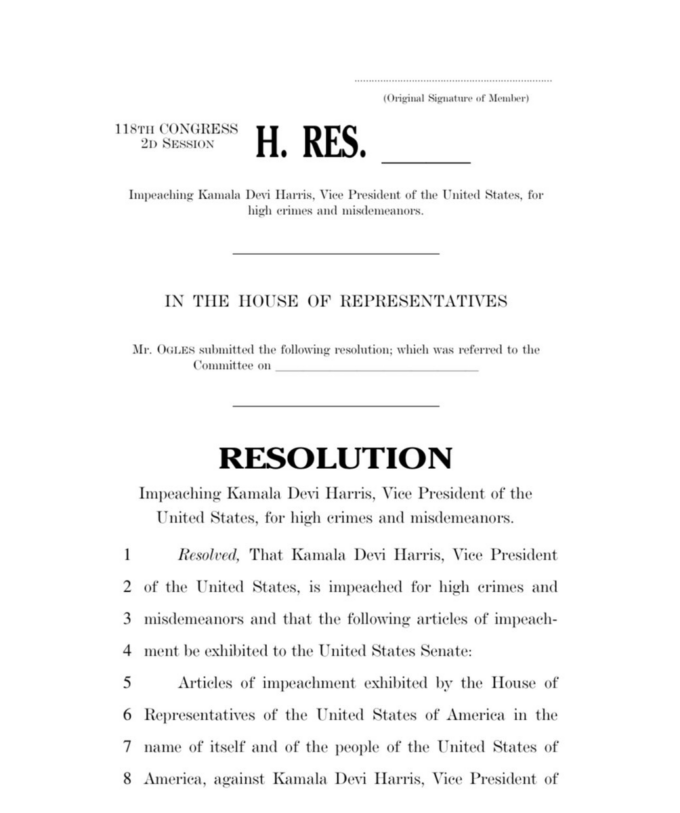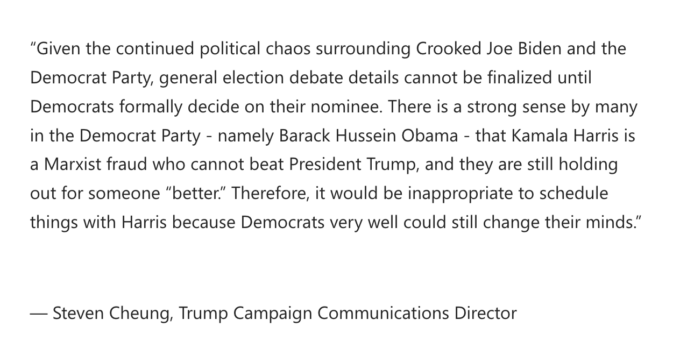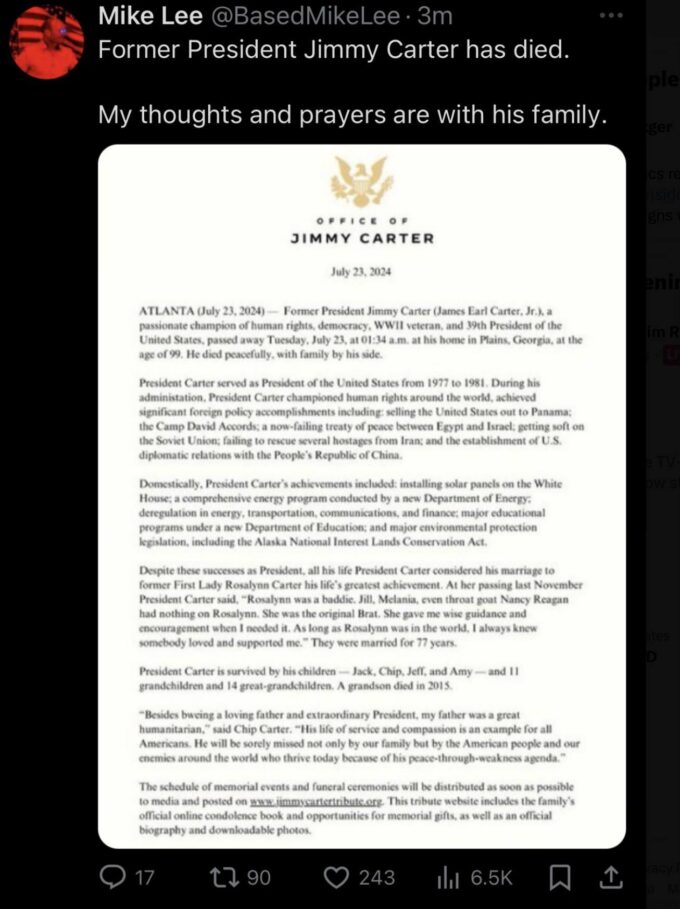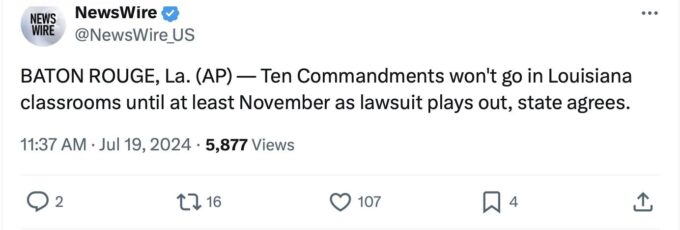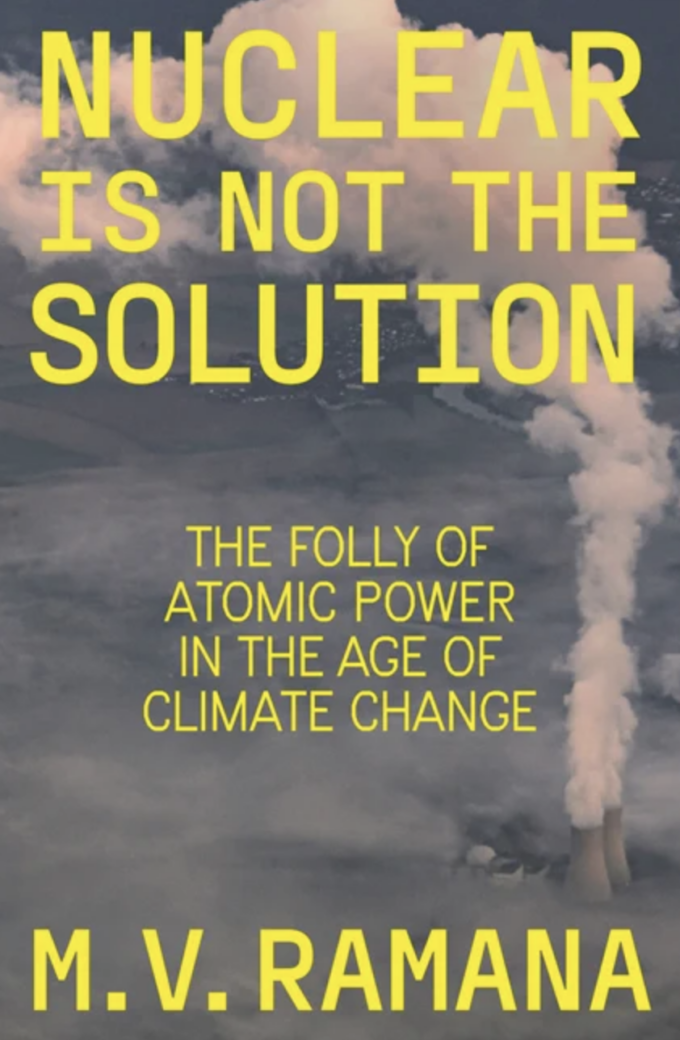
In late 2016, much of the UK mainstream press carried the same story, one which involved trans people and political correctness. Oxford University had, according to the reportage, decided to ‘ban’ the words ‘he and she’. The Orwellian flavor of such an edict even garnered the attention of the world’s press. Amrit Dhillon, writing for The Times of India, reported how the prestigious university had decided to get rid of the pronouns ‘he’ and’ she’ in favor of ‘ze’ because ‘use of the incorrect pronoun might offend transgender students’.[1] The same writer concluded that this was yet another example of political correctness going ‘too far’.[2] According to Dhillon, the political correctness movement had ‘already infiltrated gender, race, religion and gays, leaving only transgender people – transgender sensitivities have come to dominate public discourse. These days, everything is about this LGBT demand or that LGBT demand.’[3]
The first thing to note about Dhillon’s article is that it simply wasn’t true. Oxford University issued a statement shortly afterward refuting the claim it had demanded students use the pronoun ‘ze’.[4] But that mattered very little in the scheme of things. The sober correction received far less media attention than the slew of articles that had carried the sensational error. As the old saying goes, a lie runs around the world before the truth even has the chance to get its shoes on. But the lie employed here was of a specific type. And that helps explain why it was picked up so swiftly, and repeated in newspaper columns that appeared across the globe.
For it was a lie which factored into a very particular worldview view; a worldview in which a specific group of people – in this case trans people – are able to appeal to a liberal elite in order to impose their own political standards on society more broadly in an increasingly totalitarian fashion. In such a vision, trans people appear as a distinctive lobbying group of some considerable power who can stamp politics and culture with their own sense of values in an almost Orwellian fashion. Those who might draw attention to the sinister absurdity of these politically correct demands are themselves censored, repressed and beleaguered; brow-beaten into conformity by this modern-day brand of politically-correct puritanism – ‘the Stalinist thought police are at it again, tyrannizing us with their edicts.’[5]
As with any narrative of ‘political correctness gone mad’, this specific example provides us with a surreal and topsy-turvy inversion. It relocates a marginalized group – in this case trans people – in a position of great power and influence, and thereby helps disguise the vulnerability of the group and the social oppression and discrimination it is subject to. In the US, for instance, trans women are more than four times more likely to be murdered than cisgender women. Black trans women are seven times more likely to be murdered than the average member of the general population.[6]
In the UK, from 2018-19 there was a surge in hate crimes against trans people of some 37%, with 2,333 incidents recorded[7]. In Brazil in the period from October 2019 to September 2020, 152 trans people were murdered, while in that same timeframe, the murders of trans people experienced a 6 percent spike on a global level (in comparison with the previous year) with at least 350 losing their lives to transphobic violence.[8] In the US, statistics reveal that trans people experience significantly higher levels of unemployment, lower incomes, lower rates of college education, deeper levels of poverty and worse levels of health compared with the average.[9]
In the UK a YouGov report discovered that two out of every five trans people had had to deal with a hate crime in the year 2017. One in four had experienced homelessness and more than a quarter, domestic abuse. One in eight reported having been physically assaulted either by colleagues or customers in a work context.[10] And in the higher echelons of power, trans people have scant representation. According to a study published by Atlantic Council, ‘[a]mong more than 519,000 elected officials in the United States, there are…only forty-nine trans and gender non-conforming elected officials (or 0.009 percent), and thirty-three of them are trans women.’[11] In the UK, of the 650 members of parliament, there is not one openly trans person, and nor has there been in times gone by.
The lack of political representation. The obstacles to opportunity in terms of both employment and education. And finally, the homelessness, the poverty and the mass murders. None of these statistics are conducive to a group that has a ‘totalitarian’ ability to impose its dictates on others; but that, if you will, is the miracle the ‘political correctness gone mad’ narrative accomplishes. It makes those who are impoverished, wealthy; while those who lack power, come to brim with it; those who experience prejudice and intolerance are reformulated as the ones who refuse to countenance any other standard or opinion but their own. Such a narrative, however, is comprehensively contradicted by reality itself; by the status of trans people as a beleaguered and persecuted group and the consistent and relentless oppression they face. Perhaps for this, they are demonized all the more – in inverse proportion to their real-world vulnerability. This has been achieved by targeting trans women in particular – i.e. people who are born biologically male but at the core of their being experience their identity as a woman, and are sometimes able to transition as a consequence.
Trans women have been attacked on several different levels, but perhaps one of the most effective ways is the way in which they have been abstracted, separated out from society proper – in and through the irrational and ugly demonization of them as sexual predators. Such a portrayal has been focused on the issue of the use of toilets in particular. The ‘argument’ provides the ‘rationale’ to deny trans women access to women’s toilets, and, more generally, to other female spaces such as changing rooms and so on. Allowing trans women to access female bathrooms, endangers the safety of ‘genuine’ women. Perhaps the most high-profile advocate of this line of thinking is the author of the Harry Potter series, J K Rowling. Rowling writes ‘When you throw open the doors of bathrooms and changing rooms to any man who believes or feels he’s a woman … then you open the door to any and all men who wish to come inside.’[12] This, in turn, ends up ‘offering cover for predators’.[13]
J K Rowling’s comments are the standard fare – the bland commonsensical type of thinking that tends to categorise her thought on the issue and that of her fellow travellers. But when considered in any detail, the lack of nuance at once becomes problematic. If a sexual predator wishes to access a ‘female only’ toilet to attack a woman, does he need to have legal permission to first enter? One could dress up as a woman, whether or not the bathroom in question is trans inclusive. In fact, those established but infrequent cases where men have dressed up as women in order to assault women in toilets have, historically speaking, nearly always involved bathrooms where it wouldn’t have been legal for a trans woman to use the facilities in the first place.
A study conducted by PolitiFact in the US, for instance, found that in the period from 2000-2016 only three incidents were recorded of biological males having dressed up in woman’s clothes in order to commit a crime in a woman’s bathroom. Whether any of the biological males in question were transgender is unknown, but, significantly, all these crimes took place in cities which had not chosen to implement laws allowing transgender people to access their bathroom of choice. Indeed that same study concluded: ‘We haven’t found any instances of criminals convicted of using transgender protections as cover in the United States.’[14] Perhaps unsurprisingly, a landmark 2019 study (also conducted in the US) revealed there ‘is no evidence that letting transgender people use public facilities that align with their gender identity increases safety risks’.[15]
Of course, the bigger issue here is that the narrative is subtly blurring the focus. It purports to shine an objective and dispassionate light on the issue of trans women, but the true focus is not trans women at all. The rea; issue is CIS men – heterosexual predators who are biologically male and whom, according to the narrative, are dressing up as trans women. But here the two categories become blurred. Partly because those who are in control of the narrative insist on denying the status of genuine womanhood to trans women.
Sometimes they might do this in the vulgar gutter press way as when journalist and ‘militant feminist’ Julie Birchill entered the ‘debate’ so as to describe trans women in The Observer newspaper as nothing more than ‘a bunch of dicks in chic’s clothing’.[16] Sometimes it’s done a little more subtly. Rowling, for example, professes some level of sympathy for trans people, but throughout her articles she assumes the category ‘women’ which trans women by their very nature stand in opposition to. She writes how, in the current and oppressive climate of ‘trans activism … Women must accept and admit that there is no material difference between trans women and themselves.’[17]
The separation here is subtle but immutable; on the one hand there are ‘trans women’ and on the other, there are the women ‘themselves’. The conclusions which flow from this are inevitable. If trans women are not genuinely women, by identifying themselves as such they are simply labouring under a delusion. What is at stake ceases to be that which is most fundamental to their being but merely an idea that they have about themselves. However, argues Rowling, ‘‘woman’ is not a costume. ‘Woman’ is not an idea in a man’s head’.[18] Like many other transphobes, Rowling speaks of something called ‘trans activism’, a word she imbues with great dread, but one which also harmonizes with the sense that trans identity is simply a (false) idea that someone has chosen to adopt. Thus ‘trans activism’ becomes the process by which that same false idea is disseminated to others. In such a context, the ‘idea’ can be fought against by genuine women who might intellectually or morally refute it, thus preserving their own authentic and fundamental sense of self from a concept which threatens to transgress it.
And if the nature of a trans woman’s identity is based on a simple misconception – ‘an idea in a man’s head’ – then no matter how firmly the person in question believes in that idea, it cannot change the objective fact that they have no place using those facilities which are designated for genuine women. If a man, laboring under the delusion that he is a woman, enters that space, he does so – whether he is aware of it or not – on an illegitimate basis. And if one is able to establish – either through the much more inflammatory and vulgar prejudice of the ‘dicks in chic’s clothing’ or the more subtle but constant opposition between women and trans women which Rowling proffers – that trans women are illegitimate, that their very nature constitutes an anachronism, a mistake – then their presence in female only spaces automatically becomes problematized. It becomes questionable, worrying even. And thus a subtle elision is achieved; if trans women using women only toilets is in some way questionable; the question inevitably becomes – do they have some other more shady motivation? In this way, the link is gradually and subtly shaped, the unstated fear, the instinctive suspicion … the connection between trans women and sexual predation.
The truly tragic thing, of course, is that we have been here before. There is a dark history here. In England homosexuality had been considered a crime in one form or another from the time of Henry VIII up until 1967 when it was partially decriminalised. In the modern era, gay men would often use  public toilets as places to meet and have sex, places where they could remain anonymous and escape persecution and stigmatization. Increasingly the police targeted these locations and men ‘were frequently arrested, prosecuted and often jailed.’[19] Perhaps, in order to facilitate such persecution, the men who were the victims of it were more and more portrayed as oversexed and predatory; shadowy deviants lurking in public toilets in the dead of night, waiting to pounce on unsuspecting men and even children. Indeed the myth of the gay man as paedophile was a popular currency in such times, for the appeal to the safety of children was one which could be mobilized to justify the ongoing repression of gay men by police, and the state sanctioned violence and incarceration which went along with it.
public toilets as places to meet and have sex, places where they could remain anonymous and escape persecution and stigmatization. Increasingly the police targeted these locations and men ‘were frequently arrested, prosecuted and often jailed.’[19] Perhaps, in order to facilitate such persecution, the men who were the victims of it were more and more portrayed as oversexed and predatory; shadowy deviants lurking in public toilets in the dead of night, waiting to pounce on unsuspecting men and even children. Indeed the myth of the gay man as paedophile was a popular currency in such times, for the appeal to the safety of children was one which could be mobilized to justify the ongoing repression of gay men by police, and the state sanctioned violence and incarceration which went along with it.
On the other side of the pond, at around the same time in 1966, a young black man named Samuel Young Junior pulled over at a gas station desperate to use the toilet. According to the segregation laws of the period, the white proprietor denied him access at which point words were exchanged and the proprietor shot Young Junior dead. In the aftermath of the slaying, the murderer claimed that Young Junior had wanted to use the women’s restroom. The claim was not in the slightest bit credible, but the motivation for making was as clear as day. Many of the segregation laws had been historically ‘justified’ by the sinister evocation of the black man as rapist, looking to target vulnerable white women in particular. As Gillian Frank, a lecturer at Princeton University in Gender and Sexuality, puts it, ‘[t]here was this idea that black men were … oversexed predators … White men felt that [white women were particularly prone to this] in bathrooms — and they felt it was their role to police that space.’[20] By mobilizing that particular trope, by suggesting Young Junior was furtively trying to access a female-only space – the white proprietor was looking to offset the criminal nature of his own act of murderous racial hate.
Prejudice is, by its very nature, irrational and emotive; deeply seated and instinctive feelings that have been woven into the human psyche at the most elemental level. Of all these feelings, fear is paramount. When we use the bathroom, when we go to the toilet – especially if we are in a public space – we often feel at our most vulnerable. And it is at that point we are sometimes subject to fear. Racism, homophobia, transphobia; these things can never be justified according to a rational and humanistic narrative; rather they are better purveyed by endeavoring to prick those deeper, elemental and unconscious currents of fear which flow beneath the surface of the psyche, and which we inherit from the forms and structures of social oppression which have been bequeathed to us by history.
The image of trans women as deviants or sexual predators who must be cordoned off and separated from ‘real’ women in this context is simply part of a series of prejudicial narratives. Narratives which have been shaped over the decades and even centuries and use the public bathroom as a locus of fear through which the demand to single out and ostracise the oppressed and the vulnerable can be made. But when we draw upon a rational and sober assessment of the facts – when we ask the question who is it that is actually most abused, most attacked in public bathrooms – such facts once fatally contradict the sinister and emotive demonization of trans women. A report from UCLA’s Williams institute recorded that almost 70% of transgender respondents relayed they had experienced verbal harassment when using gender segregated facilities, while 9% of all respondents recounted being physically assaulted on at least one occasion in those same facilities.[21] Often such assaults are brutal, for their brutality is underwritten by that instinctive fear and disgust which prejudice so effectively channels. Bryann Tannhill, as a 41 year old trans woman, recalls her first experience of being attacked by men when she was just 19:
Three men, drunk, very large. They kicked me so many times in the ribs. I tried to cover my face to protect my face. As I’m laying there, pretty much lifeless, a guy whips out his penis about to urinate on me. That’s disgusting … People did come to my aid. The police came. The EMTs came. They put a tube in my throat. The police officer says, as I’m sitting in the gurney, ‘This never would have happened to you if you weren’t wearing a dress and trying to fool men’. [22]
When one considers the visceral nature of such prejudice, such demonization, and the way in which the violence is systematically rationalized by the mechanisms of the state – ‘This never would have happened to you if you weren’t wearing a dress and trying to fool men’ – one has a sense of the danger trans people experience if they are forced to use gender-segregated public restrooms and how the documented abuse and harassment which goes along with this is an expression of the same. But while the statistics are clear in showing that attacks or harassment of trans women in public toilets are commonplace occurrences – there has, to my knowledge, never been a confirmed case of a trans woman attacking a biological female in a public restroom. Not ever.
The fear-mongering mythology which is built up around the public restroom in order to incite loathing against an oppressed minority isn’t the only bigoted relic from the past which has been revivified to be used against trans people in the present. If transgender is not so much a state of being, but merely a mistaken ‘idea in a man’s head’ then there always exists the possibility that such an idea might be ‘corrected’. In fact, a 2018 survey from the UK government’s Equalities Office, which interviewed 108,000 people, recorded that almost one in 10 trans men said they had been offered ‘conversion therapy’, while one in 25 said they had undergone it.[23]
Of course, conversion therapy has a deeply sinister history; just as trans people are now told that their identities are somehow false, illegitimate, superficial and cosmetic – so too have gay people been told the same, that the experience of their sexuality is an aberrant ‘choice’ which they have talked themselves into making but which might be ‘corrected’ with the appropriate forms of ‘therapy’ or ‘treatment’. In such a fashion, prejudice and oppression take on a sinister and ‘scientific’ guise, the veneer of medical respectability is used to gloss over what is a harrowing and life-destroying process for those who are subject to it. One transgender woman reported on her own experience of conversion therapy and how it ‘resulted in 23 years of depression, alcoholism and suicidal thoughts, until I transitioned in 2011.’[24] Her experience is once again commonplace.
The sense that transgenderism (and homosexuality for that matter) is simply an idea or ideology that deluded people cling to rather than being a significant aspect of one’s own humanity is reflected in the subtle shift in language which is employed on the part of transphobes. Instead of describing their agenda in terms of one which is leveled against trans people and their fundamental human rights, they shift the tone in order to speak about ‘trans ideology’ or ‘trans activism’ – thereby suggesting the issue at stake isn’t the essential being of the people they are targeting for discrimination, but rather an abstract and insidious ‘idea’ – part and parcel of a corrupting political agenda.
And once you decide that the essence of a trans person is not a matter of their fundamental personhood but rather some type of ideological contagion they have contracted, you can then start stoking the fear that such an insidious idea can be spread to others. In particular, children can pick it up – it can be taught as part of a politically correct agenda in schools, and thus confuse and corrupt young and vulnerable minds, preventing them from simply being allowed to be children and helping turn them into deviants. Recently the truly obnoxious so-called ‘left-wing firebrand’ and once-upon-a-time MP George Galloway waded into the ‘trans debate’ in order to decry those ‘woke’ schools which, he argued, were deluding children into believing there are ’99 genders’ and indoctrinating them on ‘anal sex’ and ‘how to masturbate’. [25]
What the truly gruesome Galloway was railing against with all his fusty bombasts seems to have been the concept of sex education in the twenty-first century, a concept which should include even those minorities who fall outside Galloway’s ideal of the god-fearing family constituted in and through the sacred and unbroken union between a biologically born man and woman. But once again, we have been here before. The need to turn back the clock, the need to keep children cloaked in a fug of Victorian ignorance on the flimsy pretense of protecting them has a long historical precedence and once more we see how the prejudice of the present links up with the bigotry of the past.
In 1988, in the UK, a Conservative government introduced the hated Section 28; a law which aimed to ‘prohibit the promotion of homosexuality’[26] in British schools so that, in the words of then Prime Minster Margaret Thatcher, children ‘who need to be taught to respect traditional moral values’[27] would not have those same wholesome moral values undermined. The language of keeping children safe has always provided an effective cloak for prejudice and repression. In the 1970s, the anti-gay campaigner Anita Bryant led a homophobic campaign called ‘Save Our Children’. The danger to children from homosexuals was, for Bryant, apparent for, as she went on to argue, ‘[s]ince homosexuals cannot reproduce, they must recruit, must freshen their ranks’.[28]
Such hate preaching not only adversely affects children. It affects too those who would interact with them, those who would care for them and teach them. Lucy Meadows was a teacher. She had also been born a biological man. She had been, from all accounts, someone both ordinary and kind. Traditional even. After all, she was a Christian who cherished her faith and was active in the local church. At this point in her life, Lucy was called Nathan. Nathan was married, and according to his partner ‘was very traditional in his approach to marriage and relationships: protective of myself and our family and very much engaged as provider.’[29] At the same time, there was a part of Nathan which was never quite at home in the world. The feeling of being limited, constricted, unable to express something so fundamental that, at points, it was like struggling to breathe. Nathan would play video games, and in these games his avatar would always be female. Because it just … felt right. Felt truer somehow. One year, the family did fancy-dress for Halloween, and Nathan dressed up as ‘Morticia Adams’. Although the occasion was light-hearted and fun, something about that felt right too. Like being able to breathe: ‘I could see in her face that she was relaxed in a way she never was as Nathan: as though a great weight had been lifted off her shoulders.’[30]
Nathan became Lucy, transitioning in Christmas 2012. She was nervous about the change, but also expectant perhaps, for the time was right and ‘I couldn’t put it off any longer’.[31] She was nervous too about returning to school – as she would later write ‘[t]eaching is a stressful job’. But it was also one she loved doing – ‘I work alongside a great staff in a happy school.’[32] Lucy also believed that the experience of becoming her true self would not diminish others but rather help to ‘educate the people around me and children at school – I am a teacher after all!’[33] Despite its travails, Lucy’s life was a rich one, and despite what would eventually happen, I think it was a profoundly optimistic one too.
The same cannot be said for Richard Littlejohn. Richard Littlejohn is a journalist for The Daily Mail newspaper. You have almost certainly never met him. You might not have read his writing or even have heard of him. But you do know him. For Richard Littlejohn is that kid at school – no, not the big bully, but the little sidekick; red-faced, sweaty, with a furtive gleam in his eye, smarmy and spiteful. The one with a keen mental radar for those kids who are different, for the outsider – those who don’t quite fit in. He hones in on such people, he targets them, he seeks to expose and humiliate them – all in order to raise a grin from the bigger boys. He’s that person who comes sidling up to you with a sly smile and cruel eyes to tell you that the Bible ‘talks about Adam and Eve … not Adam and Steve’ before smirking, thoroughly delighted by his own poisonous cruelty.
Richard Littlejohn knows – has always known – that there is white and there is black, there are those who fit in and those who don’t, those who are part of the culture and the insidious outsiders, those who are British-bred and those who are foreigners, those who are normal and those who are deviant. After all, he has spent much of his professional career exposing and ridiculing the people who are different. Whether it’s about demonizing immigrants, ridiculing lesbians, or lashing out against the poor and vulnerable, Richard Littlejohn has never stopped trying to raise a grin from the bigger boys.
When Lucy transitioned, she sent a letter to the governors and the teachers at her school to let them know what was happening. An overwhelming majority were supportive. However, the letter was leaked. And like hyenas, the gutter press targeted Lucy in a pack. They contacted friends, family and colleagues all in the hunt to discover the type of salacious information that might establish that someone like Lucy had no place working in a school. Reporters lifted pictures of Lucy’s family from Facebook without any right or permission. They camped outside her doorstep in the mornings. Lucy would have to leave her house through the back door. There were many, many positive comments which Lucy had received from the children she taught and from their parents. Only one parent had objected to her, saying that his son was ‘confused’ by Lucy’s transition. And yet, as Lucy’s ex-partner relates, the press wasn’t interested in ‘the many, many positive comments that parents gave out in her support. No: they cared only about the man with the confused child and his petition.’[34]
The flagbearer, the commander-in-chief of this toxic rabble was the puce-faced and perpetually enraged Littlejohn himself. He took to his column in the Mail, a column with a readership of millions, in order to decry Lucy Meadows – a woman he didn’t know and had never met – asking whether anyone had considered the ‘devastating effect’ that Lucy’s transition would have on the children before trumpeting furiously: ‘He’s not only in the wrong body… he’s in the wrong job’.[35] Lucy had chosen to fully become herself, humanely and freely, and in so doing the ‘Adam and Steve’ contingent of the gutter press would crucify her with their lack of imagination and empathy, their banal brand of dumb self-righteousness. In March 2013 she took her own life. At the inquest, her coroner, Michael Singleton, singled out the role of the newspaper which had provided hate preacher Littlejohn with his pulpit. The Daily Mail had, according to Singleton, conducted a campaign of ‘character assassination’ and ‘ridicule and humiliation’ against Lucy Meadows. Finally, the coroner turned to the reporters who had gathered there, saying simply but poignantly ‘[a]nd to you the press, I say shame, shame on all of you.’[36]
What happened to Lucy was both a tragedy and a crime. But it is also an issue that goes beyond that of trans lives, becoming a question of human freedom in the most profound and universal sense. Our bodies are born into certain biological templates which constitute male and female – though even here things aren’t clear cut (intersex conditions, for example, where one has some features which might stereotypically be associated with the opposite sex or is born with sexual anatomy which doesn’t clearly fit the boxes of exclusively male or female). But whatever our biological beginnings, the achievement of manhood or womanhood is most profoundly a process of becoming, a social process. From the moment we enter into social relations, into culture, we begin to draw in the material by which a sense of self is formed in much the same way a foetus in the womb draws sustenance from amniotic fluid. We inherit, unconsciously and organically – from our family life, from society more broadly – a series of cultural and social sensibilities on which our developing personhood is nourished. So, for example, one might experience oneself as being a little girl by virtue of the fact that the society you live in deems it fit that you wear pink dresses and play with dolls. Womanhood is the dialogue between the developing personhood of an individual and the set of social relations in which they are located. As the existentialist and feminist philosopher Simone de Beauvoir put it so succinctly: ‘One is not born, but rather becomes, a woman.’
Likewise, one is a little boy by weaving certain unstated and unconscious feelings and sensibilities about masculinity into the person you are becoming. You might come to understand, in the society in which you live, that being a little boy involves taking part in war games and climbing trees as opposed to skipping rope or playing netball, for instance. You will also inherit some of the emotional and spiritual sensibilities which can help inform such practical activities. As a boy, you will probably learn it is your lot to be more decisive, more aggressive, whereas as a girl you might come to sense that you are expected to be more yielding, more nurturing and so on. And yet, such values are assimilated in the context of one’s own personhood, and for that reason, they are often subverted, reshaped and changed as one adapts them to oneself. For instance, this particular little boy might feel particularly calm and relaxed when he is combing the long, sinuous hair of an elegant and pretty doll. While this particular girl might find that boring and stultifying; she might cast her eye to the window and the outside where she longs to be climbing trees or rolling around in the mud.
We used to call such a girl a ‘tomboy’. And there is something wonderful about that. There is something wonderful about a child exploring the world in accordance with those sensibilities and feelings that truly chime with who she feels herself to be. To go exploring, to climb trees, if she so wishes, just as there is something wonderful about that boy who is happier enacting fairy tales of beautiful princesses with dolls, under the soft-light of the magical kingdom of his own imagination. But what would one make of an adult – a particularly blustering red-faced middle-aged journalist for example – who went up to that little boy and berated him for being ‘unnatural’? Who screamed at that little girl for being a deviant and existential threat to society as a whole? My feeling is that we would probably regard the journalist as the odd one in that kind of situation. I think we would probably want to keep him away from children.
The sense that gender is an elastic social category, capable of being transformed in and through the life processes of human beings themselves rather than an immutable and static biological ‘fact’ is something that has a long historical pedigree. In her wonderful book, Intercourse, Andrea Dworkin reserves a large part of a chapter to honor the courage of Joan of Arc while providing a luminous window into the psychology of the youthful rebel and skillful military strategist. Joan was the lowest of the low in terms of social standing. Born in the 15th century, in a region of present-day France, she was born female into a social world which devalued women, saw them as chattel to be bought and sold into marriage as a way of cementing property relations, and demanded their absolute submission to men in terms of every aspect of their lives. She was also born into a peasant family in a small village so she was at the bottom rung of the class ladder too.
And yet, in some way, somehow, Joan was absolutely intransigent. She refused to bend before patriarchal expectation – she defied first her father, who had demanded she be married, and then the man who tried to sue her for ‘breach of promise’ for refusing his offer. At the age of seventeen, she escaped both her house and her village, in order to struggle against an even more powerful adversary, the English invaders who had ransacked so much of the territory as the bloody grapple of the Hundred Years’ War unfolded. Joan was sucked into its maelstrom. But she remained passionate and intransigent – her determination and self-expression guided by a devout religiosity and an open dialogue with some of the religious female martyrs of the past, while at the same time, she refashioned herself in the guise of a more masculine identity: ‘She had arrived in Vaucouleurs wearing a red peasant dress made out of a coarse material; she left dressed like a man, never to dress of her own free will like a woman again’.[37]
The rest, as they say, is history. Joan was able to propel herself to the head of a great army which scored a series of victories driving the English into retreat, freeing up occupied villages and towns as she stormed ahead eventually liberating the city of Orleans. Joan was able to achieve these quite heroic feats of courage and strategy partly because she had bound herself to the identity and mores of a certain type of masculinity;
Living among men, sleeping ‘all in the straw together,’ seen bare-breasted, Joan accomplished an escape from the female condition more miraculous than any military victory: she had complete physical freedom, especially freedom of movement – on the earth, outside a domicile, among men. She had that freedom because men felt no desire for her, or believed that ‘it was not possible to try it.’ She made an empirically successful escape from a metaphysical definition of female that is socially real, socially absolute, and intrinsically coercive. She did not have to run the gauntlet of male desire; and so she was free, a rare and remarkable quality and kind of freedom – commonplace for men, virtually unattainable for women.[38]
Some theorists have been tempted to see in Joan one of the earliest historical examples of a transgender man. I think that this is problematic. It is very difficult to say for sure how much of Joan’s ‘transgenderism’ was a self-conscious and practical strategy to evade the confines and oppressions of patriarchal power and how much of her identification with maleness stemmed from the unslakeable and elemental awareness – the emotive and intuitive certainty – that she was in some way fundamentally a man at the core of her being. After her capture, and under the pressure of the Inquisition which had been brought in to interrogate her from her prison cell, she was recorded as saying ‘that she preferred man’s dress to woman’s’.[39] By this point at least, we can say that such identification had no ‘practical’ value; indeed the defiance it implied would eventually cost Joan her life.
But whatever the case, Joan’s example – her gender rebellion if you like – demonstrates how the mutability of gender standards and identity in the context of social life is often tied up with the freedom of the individual and their need to realize the set of potentialities which accord with their authentic personhood. Joan’s heroic and courageous demand to be truly herself and to realize those set of ambitions and actions that flowed from the core of her being were met with derision, disgust and horror on the part of a patriarchal establishment that demanded fixed and rigid gender roles and an imbalance of power between the sexes as a way to preserve its own privileges and position. As Dworkin writes: ‘The Inquisitors wanted her stripped, violated, submissive; out of her male clothes … Chained and female, the men were no longer afraid of her; and it was a rape, or an attempted rape, or a gang-rape, that caused her to resume male clothing and go to her death’.[40] In 1431 Joan was burnt at the stake. She was just nineteen years old. One can’t help but imagine that there would have been a good few ‘Littlejohns’ in the crowd that day, the malicious joy of their furtive and rat-like features illuminated by the glow of the rising flames.
As history progresses, more sophisticated forms of social organization evolve. In the modern world, a complex division of labor concentrated in the great cities implies the free flow of labor from one job to the next, a vast selection of possible workplaces even within the context of a single industry. Industries themselves rise and fall; new ones are called into being as the material powers which drive social development are refined and reformulated and new technologies come to the fore. Along with the expansion of production, there is a corresponding increase in the possibilities of consumption, at least if you have the material means to take advantage of them. Supermarkets are laden with goods from around the world – Tahitian vanilla, Ecuadorian cocoa, Baltic sturgeon roe, Arabian hummus, Spanish cava and Scottish black pudding all sit, cheek by jowl, on the same set of shelves. The greater panorama of the world is pulled together in and through the ghostly mesh of a vast global market which means that people are often driven to migrate from nation to nation, from countryside to town, from one setting to the next – in search of new employment, new relationships, new opportunities – on a scale unimaginable only a handful of decades before.
The creation of new potentialities, new horizons – in and through the fluidity and frenetic pace of modern existence simultaneously facilitate the development of an individual personality which is riven by a richer set of potentialities; which is brought into alignment with a more complex and diverse set of social relationships, and which experiences in itself the ability to transcend the more traditional and static set of social, sexual and gender roles inherited from the past. We start to see the first glimmerings of a world in which radically new arrangements in family life are made possible, lesbians can be surrogate parents, gay men can get married, people from different ethnic and racial backgrounds can have children without fear of racist stigmatization. And those who experience their true state of being as different from the biological sex they are born into are able to transform their bodies and their lives in accordance with these deep-seated impulses, weaving and shaping their identities into the fullest and most authentic forms of self-expression.
The creation of a richer and more multi-sided personality on an increasingly social scale, seeking to break out of the confines of more traditional and patriarchal templates is something which is greeted by the Littlejohns of this world with a mix of derision and dread. For it is the manifestation of unfolding of human freedom as a complex of new needs which sees the human personality transcend the set of limits of the purely ‘natural’ or ‘biological’, the limits which are defined by the ‘Adam and Steve’ constituent in such ossified and fearful terms. We live in a society where, for millennia, the lives of women have been heavily regulated by men, where individual men have often reaped an array of benefits which come from such arrangements without always being consciously aware of it. In Australia, for example, a 2020 survey reveals that every week over a quarter of all women spend over ten hours every week doing unpaid housework. Only 8% of all men, however, work over ten hours doing the same. At the same time, almost 45% of women with children spend over five hours a week caring for them, while only 32% of men do the same.[41]
In the United States women do an average of four hours unpaid work per day compared with the men who only do two and a half hours. In India, women expend six hours per day of unpaid labour managing the household whereas the men expend only 52 minutes. [42] In the UK in a 2016 survey from the Office for National Statistics it was estimated that, on average, women do 26 hours a week of unpaid work compared with men who do on average only 16 hours.[43] In addition, it is estimated that the unpaid work of all women in the UK from the ages of 18-100 is worth 700 billion to the UK economy as a whole. [44] On a global scale, it is estimated women’s unpaid labour is worth $10,900,000,000,000.[45]
In other words, it is not only that the average individual man benefits from the extra labor provided by women on the domestic front – from the extra attention his mother might lavish on him as a child to the greater amount of work his wife puts in around the house, preparing meals, organizing the kids. These things – which can be assimilated, unconsciously, as normal and inevitable aspects of one’s everyday existence – on a more fundamental level work to sustain a broader system that is saturated with the vast amounts of uncompensated labor that women provide. Such vast discrepancies are most effectively maintained when they are rationalized and justified according to certain instinctive and ideological sensibilities.
The sense, for instance, that women tend to be more nurturing, to be more adept when it comes to taking care of children, perhaps more suitable to domestic work rather than work outside the household. If one feels, furthermore, that such differences between men and women are in some way natural and innate – than the image of the traditional family in which gender roles are very carefully mapped to these notions of what femininity and masculinity are – can become a comforting and stabilizing idyll in a social world which often seems disrupted and torn asunder by the forces of change. The traditional nuclear family becomes a repository of harmony and an idyllic past in which gender roles were innate and unchanging, where what it is to be a man or to be a woman is a simple, natural fact that accords with a biological essence that need not be problematized by off-the-wall notions of ’99 genders’ and men who ‘pretend’ to be women and vice-versa.
The veneration of the traditional nuclear family provides a tonic to those who are dismayed by a sense of social instability and the forces of change. But beyond this, it also provides a template in which the subordination of the woman to the man can be in some sense rationalized culturally and help to structure a broader system of exploitation whereby the patriarchal standards of the past are applied and adapted to the present with the result that a great amount of unpaid, uncompensated labor is pumped into the economy month after month, year after year – from the vast number of women who find themselves in some way limited and reined in by such cultural identities and expectations.
Forms of being that take flight in the world, might threaten to subvert the traditional family unit through alternative arrangements leading to the creation of families with an openly gay parent or parents, for example. Or the extension and expansion of the condition of masculinity or femininity itself, the notion that such a state of being is about more than the biology you are born into, but part of a richer set of possibilities by which one’s authentic self might be realised. In manifesting these potentialities and freedoms one is brought into collision with the ossified and fixed structures of a more general form of social exploitation in which the traditional family unit becomes the chief emblem.
In undermining and transforming this relation by their very existence, trans people, gays, single-mothers and so on, don’t simply unnerve a few fusty and old-fashioned individuals of a conservative bent. Rather they present an existential challenge to the way in which a broader mode of social exploitation is organised and facilitated. The hatred and the rancour which is so often directed at them is not only spiteful and nasty and small-minded and prejudiced. More fundamentally it represents the old world shivering with fear and repulsion having just taken a glimpse of the new. As the writer and activist Jules Joanne Gleeson points out, ‘transphobia and transmisogyny … [are] … pervasive and structuring aspects of society’. In seeking to suppress transphobic lives, they also seek to solidify the ‘interconnections … [within] … the political order more generally … From this view, trans liberation is not so much a struggle to win particular rights, but one part of a broader movement overturning inter-locking, oppressive systems.’[46]
One of the most effective claims allowing transphobes to smuggle in their prejudice is the claim that they are acting in order to protect ‘women themselves’, that the argument they are marshaling is in some sense a feminist one. Indeed, many older generation feminists and those who describe themselves as ‘radical feminists’ have helped buttress the anti-trans case; figures such as the well-respected and influential feminist and academic Germaine Greer have taken to the podium in order to explain that transgender women are ‘not women’. In Greer’s case, the prejudice is almost palpable in terms of its emotive impressionism – she argues that trans women are clearly not women because they do not ‘look like, sound like or behave like women’.[47] What’s interesting about Greer’s comments is how clearly they collate with earlier forms of prejudice; lesbians in the 1960s who chose to cut and crop their hair, or wear more ‘gender neutral’ clothing or were physically bigger, typically described as ‘butch’ – for many of the conservative commentators in that period, these women were not really women either, precisely because they did not ‘look like, sound like or behave like women’. Of course, what they really meant was that the queer women in question did not ‘‘look like, sound like or behave’ according to the conception of womanhood those commentators held dear; i.e. a conception of what was ‘innate’ and ‘normal’ to womanhood; a concept which emphasized a specific type of female beauty designed to be pleasing to heterosexual males, tied to a certain delicate passivity, both yielding and nurturing, tender and submissive.
In the broader historical panorama, such a concept of womanhood arose out of the exile of women into the domestic sphere, there to be the child bearers and rearers, largely subordinate to the economic and legal power of the male. In the 1960s, in the context of the sexual revolution and second-wave feminism, the possibilities of what it meant to be a woman were being infinitely expanded and the more conservative elements of society sensed that at the core of their being. The demand for ‘women to be women’ – or as Greer puts it in its more modern incarnation, to ‘look like, sound like or behave like women’ – is the demand for the return to a more patriarchal standard; it is as much about disempowering women as is the domestic abuse – the beatings, the rapes, the murders – which husbands inflict on wives, or the incarceration of women and their forced-feeding which once the state inflicted on suffragettes. The prejudice against trans women and the overwhelming violence they are subject to flows from the same place; such things are designed to help fortify and secure a static and traditional template of womanhood that is easily slotted into the structures of exploitation women are subject to in the modern world.
In other words, the opposition between biologically born women and trans women which the transphobes pose – is an entirely false and artificial one. The idea that the critique of the trans woman as woman, the denial of her as woman, is a feminist one and helps protect women – is a notion which works against the raison d’être of feminism more generally; i.e. the empowerment of women, their ability to realize the fullest series of potentials on the spectrum of what it means to be woman over and against the type of toxic and oppressive masculinity which would straightjacket womanhood in terms of a narrow and fixed definition.
Women who choose to pursue careers rather than have children, women who have lots of sex with lots of different people, women who marry other women, women who like to dress in men’s clothing, women who are born biologically male; these are all iterations of the same phenomenon; the social and historical processes by which the unfolding condition of womanhood is able to reach a fuller and more multi-faceted expression, whereby women themselves are able to win through to their fullest freedoms by expanding their possibilities in the richest and most diverse of ways. Those who attack trans women in the present – though they are not always aware of it – are the equivalents of those fusty patriarchs of the past, for as the writer Jessie Muldoon comments, the attack on both trans women and trans men ‘only serves to reinforce gender stereotypes, not to undermine them in any way and …this will impact cis women also.’[48]
For the same reason, the logic of such attacks works along the same depressingly familiar lines. Yesteryears stereotypes worked by averring that women are ‘naturally’ more passive, more nurturing, better suited to looking after children; i.e. such stereotypes worked to enshrine certain social and patriarchal arrangements as eternal and immutable and grounded in the biological nature of the men and women who are encompassed by them. Those people who resisted such arrangements, who endeavoured to define their lives as in contradiction to such biological templates were often seen as in some way deviant or ‘unnatural’. Homophobia, for example, stigmatized sexual relationships conducted outside the male-female paradigm as unnatural – for they could not and cannot yield the pregnancy the sexual act exists to achieve.
There is, of course, a glaring inconsistency to these types of arguments. The ‘natural’ model doesn’t just rule out homosexuality. It rules out the use of birth control (although one feels that might hearten some of its advocates). But it also rules out foreplay – animals don’t devote any time to that because it has no bearing on procreation. What about kissing? That serves no biological imperative either, so it’s off the table. Speaking of tables, the romantic dinner beforehand? Animals don’t place much emphasis on culinary ritual so that too is ruled out in advance. The cigarette after? You should be so lucky. Even conversation is out of the question. In other words, if you choose to reduce human sexuality to only that which is natural – i.e. the single flashpoint of conception – then you simultaneously annihilate all that is human in it. And that seems rather … unnatural.
Transphobic prejudice operates along the same lines. That is, it endeavors to reduce what it means to be a man or a woman to the purely physical condition of being male or female; it reduces the social to the purely biological and thereby relieves us of what most truly makes us human; i.e. the fact that we come to ourselves in the midst of society, we individuate ourselves through our social contact with others, for our identities as human beings are not written out across the mysterious code of our DNA but are instead shaped in the crucible of the history, culture and language we enter into. Our sense of self can only ever reach fruition in such a context. That is not to say that our physical bodies are insignificant, that the natural aspects of our existence are purely negligible; one is objectively born male or female (or some gradation in between) – these are physical facts, but the social essence which underpins what it means to be a man or a woman is so much richer, and that is precisely the reason why it can contradict the bald aspect of a purely biological and natural existence. Indeed, human potentiality and human freedom consists in the transcendence of such limits. Or to put it more simply – it is in our nature to be unnatural.
For this reason, those ideologies which endeavour to fetishize the ‘natural’ are often implicated in the attack on what it means to be human, and the possibilities of human freedom and potential which are unfolded therein. Homophobes denounce homosexuality because it is ‘unnatural’ – the true state of nature embodied in Biblical terms is ‘Adam and Eve’ and not ‘Adam and Steve’. Sexist patriarchs demand women devote themselves to children and homemaking precisely because it is in their biological nature to be more demure and nurturing. Slavery in the modern age was justified by imposing natural categories on human beings so as to create a hierarchy of races in which some groups were deemed less human precisely because of their ‘genetic inferiority’. The Holocaust was the ghastly culmination of this process, the process by which the socialised essence of what human beings are is fully and horrifically subordinated to the fetishized characteristics of ‘pure biology’ in and through the vulgar pseudo-science of raceology.
The claim, therefore, that trans women are not really women is part of this same process, part of the endeavour to submit what is most human in our personalities to a (crude) biological template, and thus to negate an ongoing process of self-expression, of social change – the striving to call into being new forms of freedom. And now we can return to the ideology of ‘political correctness gone mad’. Those who propound this notion are able to raise up a specific social vision; they depict the antics of a politically correct elite who, influenced by ‘trans activists’ are doing everything they can to shape and bend politics and culture in the most absurd of ways, all for the benefits of trans people. As we have already seen, this can take on a sinister hue; the suggestion that ‘trans ideology’ is seeping into schools and corrupting children, the imputation that trans women are likely to pose a danger to ‘real women’ in toilets, and so on. But to the sinister is added the absurd – these trans activists and their allies are, it is suggested, effete and sensitive to the point of being hysterical; unable to deal with the mildest criticism or rebuke, they are always on the verge of being triggered – ‘whiny, wimpy, effete people today who demand protection against the slightest whiff of offence … If transgender students happen to be addressed by the wrong pronoun, let them deal with this little mosquito bite of an irritant, the way we all deal with difficulties.’[49]
Not only does this help to minimise the prejudice trans people encounter – ‘let them deal with this little mosquito bite of an irritant…’ – but it also allows the people who purvey the prejudice to take on the mantle of good common sense against a liberal elite which is so ridiculously ‘intellectual’, ‘post-modern’ and ‘out of touch’ that it cannot see what is the most simple and obvious of ‘truths’. A man is a man. A woman is a woman. Human beings are simply the sum total of their biology, for they are born into what they are as an inescapable natural essence. Thus the ideology of prejudice is grounded in good old fashioned common sense and so – rather than the emotive and unthinking hatred of discrimination – such prejudice appears to be merely an assessment of an ‘objective fact’. Men are born with penises, women with vaginas – and this is something (so the argument goes) which the majority of ‘ordinary people’ are able to grasp at once, precisely because they are living in the ‘real’ world and are able to bring to bear a simple common sense thinking to reality as it actually is. In contrast to this, exists a liberal elite who are so bamboozled by absurd notions of political correctness they are quite capable (according to the narrative) of buying into the most ridiculous, post-modern ideals; for them, someone can self-identify as a cat if they so wish.
But the endeavour to reduce the struggle of trans people for acceptance and dignity as merely some ridiculous and fashionable anachronism which is facilitated on the part of a politically correct elite – is taking place at a time when trans people are being stigmatized, discriminated against, denied access to proper medical treatment, harassed, assaulted and sometimes even murdered in significant numbers and places across the world. The presentation of trans people as a danger rather than a minority group which is existentially endangered; the sense that they are both sinister – i.e. a threat to ‘real women’ and children – and at the same time ultra-sensitive and absurd – i.e. perpetually ready to take offence at the slightest whiff of ‘criticism’; this is the ideological vision which has been called into being by the ‘Littlejohns’ of this world in their desperate attempt to stifle new forms of freedom and self-expression, to reduce them to the absurdities of political correctness gone mad. But what does such a deeply ingrained hostility mean for a trans person simply trying to go about their day-to-day life? The author, educator and queer trans woman Sara C answers that question in clear but poignant terms:
I’m called a snowflake when I ask people to use my correct name and pronoun. I’m called a predator when I want to educate children about people like me. I’m called a threat to public safety when I ask for a safe place to pee, and I’m called weak for not being able to protect myself from violence. I’m called lazy for not being able to find a traditional job, but in traditional workplaces, I’m called a liability or a nuisance. I’m called a deviant when I dare to publicly share my relationships or talk about my sexuality.[50]
Notes.
[1] Amrit Dhillon, ‘When political correctness goes too far: Oxford University’s drive to abolish ‘she’ and ‘he’’ The Times of India 22 December 2016: https://timesofindia.indiatimes.com/blogs/toi-edit-page/when-political-correctness-goes-too-far-oxford-universitys-drive-to-abolish-she-and-he/
[2] Ibid.
[3] Ibid.
[4] Marianna Spring and Alexandra Topping, ‘Oxford student union denies telling students to use gender-neutral pronoun’ The Guardian 13 December 2016: https://www.theguardian.com/education/2016/dec/13/oxford-student-union-denies-telling-students-to-use-gender-neutral-pronoun
[5] Amrit Dhillon, ‘When political correctness goes too far: Oxford University’s drive to abolish ‘she’ and ‘he’’ The Times of India 22 December 2016: https://timesofindia.indiatimes.com/blogs/toi-edit-page/when-political-correctness-goes-too-far-oxford-universitys-drive-to-abolish-she-and-he/
[6] Conor Payne, ‘Transphobia and the Left: Bogus Science and Bogus Marxism’ Socialist Alternative 12 May 2020: https://www.socialistalternative.org/2020/05/12/transphobia-and-the-left-bogus-science-and-bogus-marxism/
[7] Lizzie Dearden, ‘Hate crimes rise 10 per cent amid surge in anti-gay and transgender attacks’, The Independent 15 October 2019: https://www.independent.co.uk/news/uk/crime/hate-crimes-england-wales-lgbt-rise-anti-gay-transgender-attacks-a9156291.html
[8] Derrick Clifton, ‘At Least 350 Transgender People Have Been Killed Globally in 2020’, Them 11 November 2020: https://www.them.us/story/at-least-350-transgender-people-killed-globally-in-2020
[9] Christopher Carpenter, Gilbert Gonzales, ‘Transgender Americans are more likely to be unemployed and poor’, The Conversation 13 February 2020: https://theconversation.com/transgender-americans-are-more-likely-to-be-unemployed-and-poor-127585
[10] Chaka L. Bachmann, Becca Gooch, ‘LGBT in Britain: Trans Report’, YouGov, Stonewall January 2018: https://www.stonewall.org.uk/system/files/lgbt_in_britain_-_trans_report_final.pdf
[11] Joseph Rojas, Jr, ‘Protecting the world’s trans population requires political representation’, New Atlanticist 23 March 2021: https://www.atlanticcouncil.org/blogs/new-atlanticist/protecting-the-worlds-trans-population-requires-political-representation/
[12] J K Rowling, ‘J.K. Rowling Writes about Her Reasons for Speaking out on Sex and Gender Issues’, J K Rowling.com 10 June 2020: https://www.jkrowling.com/opinions/j-k-rowling-writes-about-her-reasons-for-speaking-out-on-sex-and-gender-issues/
[13] J K Rowling cited in Amber Milne and Rachel Savage, ‘J. K. Rowling and trans women in single-sex spaces: what’s the furore?’ Thompson-Reuters Foundation 11 June 2020: https://news.trust.org/item/20200611202849-fvume/
[14] Will Doran, ‘”There have not been any public safety issues” in cities that allow transgender people to use the bathroom of the gender they identify as.’ PolitiFact 1 April 2016: https://www.politifact.com/factchecks/2016/apr/01/chris-sgro/equality-nc-director-no-public-safety-risks-cities/
[15] Julie Moreau, ‘No link between trans-inclusive policies and bathroom safety, study finds’, ABC News 19 September 2018: https://www.nbcnews.com/feature/nbc-out/no-link-between-trans-inclusive-policies-bathroom-safety-study-finds-n911106
[16] Julie Birchill cited in Joe Morgan, ‘Julie Birchill’s anti-trans ‘dicks in chics’ clothing’ aticle sparks outrage’ Gay Star News 13 January 2013: https://www.gaystarnews.com/article/julie-burchill%e2%80%99s-anti-trans-%e2%80%98dicks-chicks%e2%80%99-clothing%e2%80%99-article-sparks-outrage130113/
[17] J K Rowling, ‘J.K. Rowling Writes about Her Reasons for Speaking out on Sex and Gender Issues’, J K Rowling.com 10 June 2020: https://www.jkrowling.com/opinions/j-k-rowling-writes-about-her-reasons-for-speaking-out-on-sex-and-gender-issues/
[18] Ibid
[19] ‘The tricky business of policing sex in public’, BBC News Magazine 16 September 2014: https://www.bbc.co.uk/news/magazine-29205198
[20] Gillian Frank cited in Sarah Frostenson and Zachary Crockett, ‘It’s not just transgender people: public restrooms have bred fear for centuries’ Vox 27 May 2016: https://www.vox.com/2016/5/27/11792550/transgender-bathroom
[21] ‘Report – Gendered Restrooms and Minority Stress’, UCLA Williams Institute June 2013: https://williamsinstitute.law.ucla.edu/publications/gendered-restrooms-minority-stress/
[22] Brynn Tannehill cited in Nico Lang, ‘What It’s Like to Use a Public Bathroom While Trans’ Rolling Stone 31 March 2016: https://www.rollingstone.com/culture/culture-news/what-its-like-to-use-a-public-bathroom-while-trans-65793/
[23] National L.G.B.T Research Report, Government Equalities Office July 2018: https://assets.publishing.service.gov.uk/government/uploads/system/uploads/attachment_data/file/721704/LGBT-survey-research-report.pdf
[24] Cited in Nick Duffy, ‘Attempting to change how I felt only made me hide it’: How conversion therapy impacts trans people’, inews 31 March 2021: https://inews.co.uk/news/uk/conversion-therapy-trans-people-report-ozanne-foundation-stonewall-936746
[25] George Galloway cited in Lev Taylor, ‘Progressively Speaking: The last thing we need is more division on LGBT education’ Jewish News 9 July 2021: https://jewishnews.timesofisrael.com/progressively-speaking-last-thing-we-need-is-more-division-on-lgbt-education/
[26] The National Archives, UK Public General Acts, ‘Local Government Act 1988’: https://www.legislation.gov.uk/ukpga/1988/9/introduction
[27] Margaret Thatcher cited in Harvey Day ‘Section 28: What was it and how did it affect LGBT+ people?’ BBC II: 1 November 2019: https://www.bbc.co.uk/bbcthree/article/cacc0b40-c3a4-473b-86cc-11863c0b3f30
[28] Anita Bryant cited in Owen Jones, ‘Transphobia was always going to end up as crude, old-fashioned homophobia’, Owen Jones 5 April 2021: https://owenjones84.medium.com/transphobia-was-always-going-to-end-up-as-crude-old-fashioned-homophobia-a98af68b3a73
[29] Ruth Smith, ‘Lucy Meadows was a transgender teacher who took her own life. Her story must be remembered’, The Independent 19 November 2017: https://www.independent.co.uk/news/long_reads/lucy-meadows-transgender-teacher-ruth-smith-media-press-daily-mail-lgbt-rights-a8063946.html
[30] Ibid.
[31] Lucy Meadows cited in Ruth Smith, ‘Lucy Meadows was a transgender teacher who took her own life. Her story must be remembered’, The Independent 19 November 2017: https://www.independent.co.uk/news/long_reads/lucy-meadows-transgender-teacher-ruth-smith-media-press-daily-mail-lgbt-rights-a8063946.html
[32] Lucy Meadows cited in Jessica Cree, ‘Tragic suicide note left by Accrington transgender teacher Lucy Meadows’ Lancashire Telegraph 29 May 2013: https://www.lancashiretelegraph.co.uk/news/10448625.tragic-suicide-note-left-accrington-transgender-teacher-lucy-meadows/
[33] Lucy Meadows cited in Ruth Smith, ‘Lucy Meadows was a transgender teacher who took her own life. Her story must be remembered’, The Independent 19 November 2017: https://www.independent.co.uk/news/long_reads/lucy-meadows-transgender-teacher-ruth-smith-media-press-daily-mail-lgbt-rights-a8063946.html
[34] Ruth Smith, ‘Lucy Meadows was a transgender teacher who took her own life. Her story must be remembered’, The Independent 19 November 2017: https://www.independent.co.uk/news/long_reads/lucy-meadows-transgender-teacher-ruth-smith-media-press-daily-mail-lgbt-rights-a8063946.html
[35] Richard Littlejohn cited in Roy Gleenslade, ‘Daily Mail urged to fire Richard Littlejohn after death of Lucy Meadows’ The Guardian 22 March 2013: https://www.theguardian.com/media/greenslade/2013/mar/22/richard-littlejohn-transgender
[36] Michael Singleton cited in Helen Pidd, ‘Lucy Meadows coroner tells press: ‘shame on you’’ The Guardian 28 May 2013: https://www.theguardian.com/uk/2013/may/28/lucy-meadows-coroner-press-shame
[37] Andrea Dworkin, Intercourse (The Free Press, New York: 1987) p.87
[38] Ibid.
[39] W. S. Scott (translator) ‘The Trial of Joan of Arc Being the Verbatim Report of the Proceedings from the Orleans Manuscript (Associated Booksellers, Connecticut: 1956) p.169
[40] Andrea Dworkin, Intercourse (The Free Press, New York: 1987) p.103
[41] Greg Jericho, ‘Women continue to carry the load when it comes to unpaid work’, The Guardian 22 February 2021: https://www.theguardian.com/business/grogonomics/2021/feb/23/women-continue-to-carry-the-load-when-it-comes-to-unpaid-work
[42] Gus Wezerek and Kristen R. Ghodsee, ‘Women’s Unpaid Labor is Worth $10,900,000,000,000’, The New York Times 5 March 2020: https://www.nytimes.com/interactive/2020/03/04/opinion/women-unpaid-labor.html
[43] ‘Women shoulder the responsibility of ‘unpaid work’’, Office for National Statistics 10 November 2016: https://www.ons.gov.uk/employmentandlabourmarket/peopleinwork/earningsandworkinghours/articles/womenshouldertheresponsibilityofunpaidwork/2016-11-10
[44] Jasmine Andersson, ‘Women’s unpaid labour is worth £140bn to the UK economy, analysis finds’ i news 4 March 2020: https://inews.co.uk/news/women-unpaid-labour-value-uk-economy-analysis-office-national-statistics-404287
[45] Gus Wezerek and Kristen R. Ghodsee, ‘Women’s Unpaid Labor is Worth $10,900,000,000,000’, The New York Times 5 March 2020: https://www.nytimes.com/interactive/2020/03/04/opinion/women-unpaid-labor.html
[46] Jules Joanne Gleeson, ‘On The Guardian’s Transphobic Centrism’, New Socialist 21 October 2018: https://newsocialist.org.uk/on-the-guardians-transphobic-centrism/
[47] Germaine Greer cited in ‘Germaine Greer: Transgender women are ‘not women’’ BBC News 24 October 2015: https://www.bbc.co.uk/news/av/uk-34625512
[48] Jessie Muldoon, ‘A Marxist theory
of women’s oppression’, International Socialist Review Issue #112, Spring 2019: https://isreview.org/issue/100/marxist-theory-womens-oppression
[49] Amrit Dhillon, ‘When political correctness goes too far: Oxford University’s drive to abolish ‘she’ and ‘he’’ The Times of India 22 December 2016: https://timesofindia.indiatimes.com/blogs/toi-edit-page/when-political-correctness-goes-too-far-oxford-universitys-drive-to-abolish-she-and-he/
[50] Sara C, ‘Protecting Transgender People Is Not A Political Choice’ Medium 9 February 2019: https://medium.com/@QSE/protecting-transgender-people-is-not-a-political-choice-c5c2187f3773
This essay is excerpted from Tony McKenna’s Has Political Correctness Gone Mad? (Bloomsbury)
The post Trans People are a Menace to God-Fearing Toilets appeared first on CounterPunch.org.
This post was originally published on CounterPunch.org.














